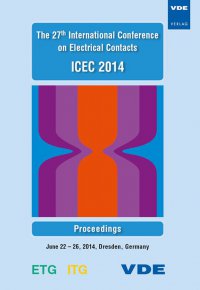Contact Resistance of Vacuum Interrupters for Electric Power Systems in Liquid Nitrogen at Direct and Alternating Current
Conference: ICEC 2014 - The 27th International Conference on Electrical Contacts
06/22/2014 - 06/26/2014 at Dresden, Deutschland
Proceedings: ICEC 2014
Pages: 5Language: englishTyp: PDF
Personal VDE Members are entitled to a 10% discount on this title
Authors:
Golde, Karsten; Hinrichsen, Volker (Technische Universitaet Darmstadt, Darmstadt, Germany)
Abstract:
Vacuum interrupters have been established over the past decades as standard technique for circuit breakers in electric power distribution systems. Due to excellent electrical properties vacuum technology moves into the focus of further applications. For example, in combination with high-temperature superconductive (HTS) equipment (e.g. current limiters) or superconductive subnets no other type of switchgear can be used directly in the liquid nitrogen environment, which would, however, be desirable for economic reasons. This is evident when alternative insulating and arc extinguishing media are considered: sulfur hexafluoride (SF6) is liquefied, and oil is solidified at such temperatures (boiling point of nitrogen: 77 K). Semiconductor switches will not operate under these conditions due to “carrier freeze out”. In this work the overall resistance of vacuum interrupters in liquid nitrogen (LN2) is investigated and compared with that at ambient temperature. In power distribution systems alternating current (AC) is used almost exclusively. However, due to eddy currents superconductors are not working without losses at AC. Therefore, it might be conceivable that in future direct current (DC) is used more often. This is why both kinds of currents are considered here. The overall interrupter resistance is separated into the current path (bulk resistance) and the contact resistance between both contacts. The current path normally consists of pure copper, so the resistance can be calculated easily for the temperatures of interest. The contact resistance can only be estimated by formulas and will be compared to the measured values.


